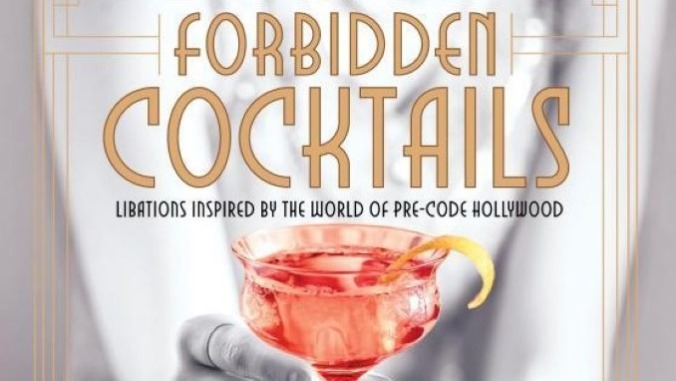Forbidden Cocktails Entertains With Spirited Libations Celebrating Scandalous Pre-Code American Cinema
Photos via Hachette
American cinema is currently living through an all-too-familiar era of self-inflicted, “marketable prudishness,” as Paste‘s own Jacob Oller once put it. It’s the sort of era we’ve been in before, decades earlier, when public clamor against the “indecency” of motion pictures, and widespread criticism of frank depictions of elements such as sex and violence in movies, led to decades of strict censorship under the Motion Picture Production Code from the 1930s-1960s. But there was an earlier era ripe with possibility that we can still look back on today, a fertile creative period that sadly came and went too fast: Pre-Code Hollywood cinema. Roughly defined as the five year or so stretch between the widespread adoption of “talkies” in the late 1920s and the genuine enforcement of the Code in 1934, this was an era of genuinely scandalous motion pictures that challenged the status quo, titillated audiences and ultimately forced Hollywood into self-censorship. Oh, and they were also filled to the brim with booze.
That last bit is notable for the fact that most forms of booze were quite illegal during the period–the Prohibition of alcohol in the U.S. had gone into effect in 1920 and wouldn’t be repealed until the very end of 1933. This dovetailed nicely with the Pre-Code cinema era, and the result is that alcohol and drinking became an inescapable feature of Hollywood films of this period. What easier way was there to illustrate characters flouting the moralistic federal laws of the era than by showing them reveling with chilled cocktails in hand? By the tail end of the Prohibition era, most Americans who chose to continue drinking had found regular access to contraband beer, wine or spirits anyway–depicting Pre-Code film characters drinking cocktails was plenty true to life, even if it was technically glorifying “illicit” activities. And that on-screen cocktail culture is well served by author André Darlington’s new tribute to the era, Forbidden Cocktails. The book, from Turner Classic Movies and Running Press, is available now via Hachette, and functions as both a cocktail recipe book and capable overview of some filmic highlights of the Pre-Code era.
In Forbidden Cocktails, Darlington is essentially tackling 50 film-and-cocktail duos, pairing new, spirited creations against each film by considering what is appropriate to that movie’s story, themes, visuals, characters, etc. We are talking about drinks appropriate to the films of Jean Harlow, Joan Blondell, James Cagney or Barbara Stanwyck, pairings matched to the likes of The Public Enemy, Dracula, King Kong, The Thin Man or It Happened One Night. Each segment of the book first tackles a film, detailing some of the elements of sexuality, criminality or indecency that would no longer have been allowed following 1934, and then moves on to the matching cocktail, with attractive photography and easy to follow recipe instructions.
To Darlington’s credit, he does a fine job with the cinematic side of the equation, despite his primary background as a cocktails and spirits writer rather than a film historian. Each film gets a nice little hype package, although the limiting factor for any modern reader (and viewer) is of course going to be the availability of these films in question: How many of them can even a curious reader actually watch in 2024? Curious about the answer to this question, I looked up the availability of all 50 featured in Forbidden Cocktails–as it turns out, only 8 of them are currently available to freely stream on major streaming services as I write this. Another 17, thankfully, are available to rent via the major streamers. But that still leaves half, a full 25 films, that are not available digitally in any way, shape or form at the moment. It’s asking a lot for the audience to go digging for out-of-print DVD copies of Pre-Code films, so unfortunately it seems likely that even readers of Forbidden Cocktails will be limited in their attempts to replicate the full experience suggested in its pages.
-

-

-

-

-

-

-

-

-

-

-

-

-

-

-

-

-

-

-

-

-

-

-

-

-

-

-

-

-

-

-

-

-

-

-

-

-

-

-

-








































